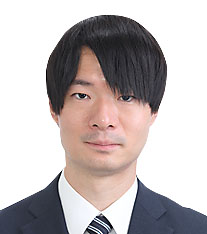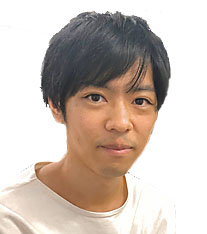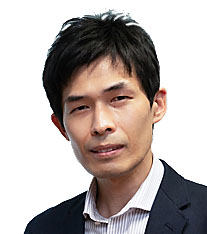- JST Home
- /
- Strategic Basic Research Programs
- /
 PRESTO
PRESTO- /
- project/
- Creating Human-Centered Interaction to Solve Social Issues/
- [Human-Centered Interaction] Year Started : 2023
[Human-Centered Interaction] Year Started : 2023
Seitaro Iwama
Establishment of self-modulation training methods of brain states to stabilize performance
Grant No.:JPMJPR23I1
Researcher
Seitaro Iwama

Assistant Professor (Non-tenured)
Faculty of Science and Technology
Keio University
Outline
This project aims to establish a training method for self-modulation of brain states to stabilize performance in humans. First, an algorithm to estimate brain states based on non-invasive brain signals before initiating a task is developed. Then, the algorithm is used to train self-modulation of the brain state to provide feedback from the estimated results. By using this technique, I aim to (1) stabilize the acquired skills and (2) improve learning efficiency by stabilizing performance.
Takahisa Uchida
Dialogue Agents Mediating Diverse Social Relationships Based on Values Models
Grant No.:JPMJPR23I2
Researcher
Takahisa Uchida

Assistant Professor
Graduate School of Engineering Science
The University of Osaka
Outline
The purpose of this research is to realize dialogue agents that mediate diverse human social relationships (human-centered interaction). First, I will establish a theory of agents that elicit self-disclosure and a method for modeling values. I will also develop technologies to facilitate diverse social relationships at the individual and community levels, and demonstrate them with upper grade elementary school students. I adopt a research approach that integrates AI and robot technology with humanities and social sciences to create a new research field: AI-Robot Social Relationships Research.
Rina Kagawa
A clinical decision support system that addresses the psychological digital divide caused by cognitive biases.
Grant No.:JPMJPR23I3
Researcher
Rina Kagawa

Senior researcher
Artificial Intelligence Research Center
National Institute of Advanced Industrial Science and Technology
Outline
Even if extremely high-performance AI is spread throughout the world in the future in a very equal manner, as long as the decision makers are human beings, a “psychological digital divide” will appear based on individual differences in the ability to utilize AI and differences in the situations where AI is used. This project aims to propose an AI system that supports better decision making, which cannot be achieved by improving AI performance alone, by describing in detail the cognitive biases of human users of AI.
Shunichi Kasahara
Elucidating and Constructing Augmented Self-Subjectivity through Human-AI Integration
Grant No.:JPMJPR23I4
Researcher
Shunichi Kasahara

Researcher
Sony Computer Science Laboratories, Inc.
Outline
This project aims to elucidate the transformations in self-awareness and sociality engendered by augmented self-subjectivity through the construction of self-augmentation systems via the integration of humans and AI. Focusing on three facets: 1) alterations in self-awareness, 2) shifts in communication, and 3) impacts on social norms, I will conduct scientific investigations from perceptual, cognitive, and social science perspectives concerning augmented self-subjectivity. By identifying societal challenges stemming from technological advancements early on, this project contribute to propose solutions grounded in scientific evidence.
Ryo Suzuki
Integrating Generative AI with Augmented Reality for Real-World Human-AI Interaction.
Grant No.:JPMJPR23I5
Researcher
Ryo Suzuki

Part-time Lecturer
Research Institute of Electrical Communication
Tohoku University
Outline
This proposal aims to integrate Generative AI with Augmented Reality (AR) to augment human thought and creativity. Beyond traditional human-AI interaction, which has been limited to screen-based interfaces, this research aims to weave Generative AI into the fabric of everyday life through the seamless integration of AR and AI. More specifically, I will explore how to integrate AR with 1) large language models for augmented languages, 2) Generative AI for on-demand AR content creation, and 3) foundational computer vision models for context-aware assistants. Based on these outcomes, I will establish a new research domain, called Generative AR.
Yu Takagi
Creating new interactions between large language models and the human brain
Grant No.:JPMJPR23I6
Researcher
Yu Takagi

Associate Professor
Graduate School of Engineering
Nagoya Institute of Technology
Outline
In this study, I will seek to create new interactions between large language models and the human brain. First, I will understand the human brain by letting it interact with large language models using natural language. Second, I will understand the internal representations of large language models during interactions through human brain activity. Lastly, I propose a novel framework for interactions between individuals and the language model, considering each individual’s state.
Ryoichi Takashima
Development of low-resource speech and acoustic recognition technology for handicapped people
Grant No.:JPMJPR23I7
Researcher
Ryoichi Takashima

Professor
College of Information Science and Engineering
Ritsumeikan University
Outline
To support the lives of dysarthric people who have difficulty with fluent speech, I will develop speech recognition technology for them to facilitate communication and environmental sound recognition technology for safety monitoring. The current sound recognition technology based on deep learning requires a large amount of training data, but it is difficult to record the voices of people with disabilities and abnormal sounds to be monitored. To solve this problem, I aim to realize a technology that can recognize the speech of dysarthric people and environmental sounds with high accuracy even in situations where there is little or no training data.
Tomohiro Nagashima
Understanding and Supporting Learning with AI in Classrooms through Co-design with Students
Grant No.:JPMJPR23I8
Researcher
Tomohiro Nagashima

Junior Professor
Department of Computer Science
Saarland University
Outline
In this research, we will work with education stakeholders in Germany and Japan to addresses the question: “how might we support school students to use AI effectively, safely, and independently in the classroom?” We aim to deepen students’ understanding and perception of AI-based learning from their perspective and to design new interactions in line with how they envision learning with AI.
Shio Miyafuji
Skill Acquisition Support through Gaze Characteristics Analysis and Gaze Guidance
Grant No.:JPMJPR23I9
Researcher
Shio Miyafuji

Assistant Professor
School of Computing
Institute of Sience Tokyo
Outline
This research explores the transfer of unconscious skills from an expert to a trainee using mixed reality (MR) gaze guidance in neurosurgeon microscopic suturing training. The characteristics of the expert’s movements and gaze are extracted from the microscopic videos to understand the skill by focusing on the gaze. Furthermore, by reproducing the movement and gaze characteristics in the trainee’s practice video and providing feedback to guide these movements and gaze, this research attempts to transfer the unconscious skills of the experts.
Satoshi Yagi
Super-Transportation Leveraging Human Collaboration Through Robot’s Physicality
Grant No.:JPMJPR23IA
Researcher
Satoshi Yagi

Assistant professor
Graduate School of Informatics
Kyoto University
Outline
In locations such as train stations and commercial facilities, where there is a high density of human traffic, seamless integration of robots into these human pedestrian flows necessitates an interaction that fosters coordinated movement between humans and robots. This research strives to understand the cooperative behavior exhibited by humans towards robots during group movements and applies this understanding to the design and learning of robot actions that elicit human coordination through their physicality. With this approach, the research aims to achieve ‘super-transportation’: a mode of transportation involving both humans and robots that surpasses the efficiency of human-only movement.
Koji Yatani
Designing Motivational Interviewing Chat Environments with Multiple Chatbots
Grant No.:JPMJPR23IB
Researcher
Koji Yatani

Associate Professor
Graduate School of Engineering
The University of Tokyo
Outline
Motivational interviews using AI and chatbots, aimed at aiding spontaneous personal change, have so far been conducted in a 1-on-1 format. This research proposes a new communication method where users communicate with multiple AI-based chatbots in a group setting. This communication mechanism is expected to better encourage users to share their own experience and emotions while listening to the chatbots simulating other people’s stories. Specifically, this method will be validated with people who have symptoms and conditions like premenstrual syndrome and substance dependence, which are often difficult to disclosure to others due to potential misunderstanding.
Michiko Yoshie
Development of training methods for regulating emotional states during social interaction
Grant No.:JPMJPR23IC
Researcher
Michiko Yoshie

Senior Researcher
Department of Information Technology and Human Factors
National Institute of Advanced Industrial Science and Technology (AIST)
Outline
Psychological stress during face-to-face social interaction can have a negative impact on human performance. To tackle this issue, this research project will focus on public music performance as an example of face-to-face social interaction situations, and elucidate the internal and external factors related to performance anxiety in musicians. Based on these factors, the project aims to develop training methods for regulating emotional states during social interaction, which could ultimately contribute to improving human performance under stress.













